#Surinam Horned Toad
Text
#WorldFrogDay: Maybe this Surinam Horned Frog (Ceratophrys cornuta) wouldn't look so happy if it could read what naturalist George Shaw wrote about it in its description...

"Horned Frog" from The Naturalist's Miscellany, v.3, pl. 76 (1791-2) by George Shaw (English, 1751-1813). Biodiversity Heritage Library.
Here's what Shaw said: "Should inquiry be made, which is the ugliest animal yet known to exist? The creature here represented might perhaps with justice be proposed as an answer: an animal of such prodigious deformity as even to exceed in this respect the Surinam toad...." ☹️
#frog#Surinam Horned Toad#Horned Toad#Pacman Frog#herpetology#zoology#The Naturalist's Miscellany#George Shaw#natural history art#scientific illustration#sciart#historical sciart#zoological illustration#Biodiversity Heritage Library#illustration#book plate#lithograph#18th century art#British art#European art#animal holiday#World Frog Day#animals in art
7 notes
·
View notes
Photo


#114 - Bufroak
#115 - Suriwyrm
336 notes
·
View notes
Text
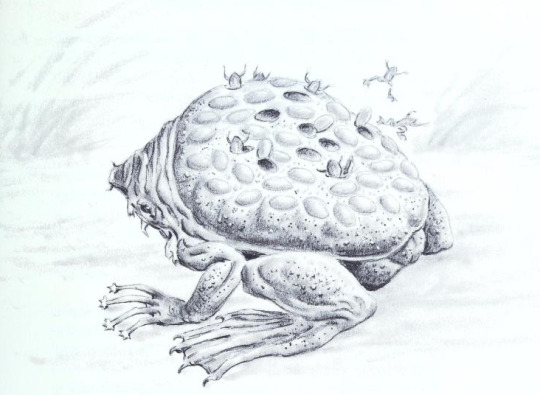
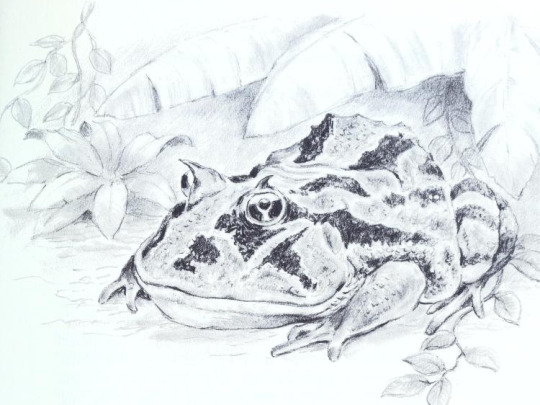
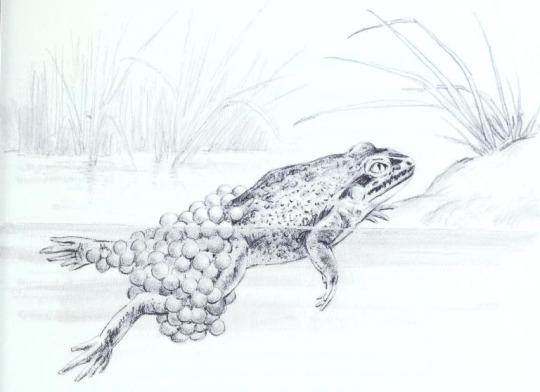

From Frogs, Toads, and Salamanders, and How They Reproduce. Illustrated by Matthew Kalmenoff. 1975.
#amphibians#frogs#toads#surinam toads#horned frogs#midwife toads#poison dart frogs#Matthew Kalmenoff
116 notes
·
View notes
Note
Besides the ones your OCs are based off of, what animals do you like?
And also, what are your opinions on Whale and Dolphins?
And lastly, do you like beans.
I like a lot of animals honestly, but here’s some notable favorites: white’s tree frog, packman frog, surinam horned frog, the african bullfrog, cane toad, european toad, glass frog, mexican leaf frog, etc. Also horses and dogs <3
I think whales and dolphins are cool. Not my favorite animals but i do appreciate their shapeliness.
Beans :) (kidney beans are my favorite)
23 notes
·
View notes
Note
there's a frog species nicknamed "banjo frogs" because their call kind of sounds like a string being plucked! that's already fun, but they also have another, even funnier nickname... pobblebonk
i think that's just delightful
actually there's a lot of frogs/toads with fun names and appearances!
like the motorbike frog, the hairy frog/horror frog/wolverine frog, banana frog, pumpkin toadlet, horned frog, paradoxical frog/shrinking frog, turtle frog, any flying frog, common Surinam toad/star-fingered toad, and amazon milk frog!
not gonna add fun facts for all of them because i'm not about to make you read a wall of text afajkfjkdsfj i have self-restraint bigger than my need to talk about frogs at all times
Banjo frog is rEAL OVO I honestly throught it was "just" a meme that a carpenter had made (seen a tiktok a bit too much about queers loving banjo frogs x'D hahaha) omg that's so cool I love that :D!!! 🐸
Horror frog OVO? Banana frog? MILK FROG? okay these are cool and silly and I love that x'D
Thank you for sharing all these wonderful frog names 🐸🐸I dig them a lot :D <3
#who knew there were so many cool frog names OVO#I didn't that's for sure xD#I love learning cool facts like this :D#replies
5 notes
·
View notes
Photo
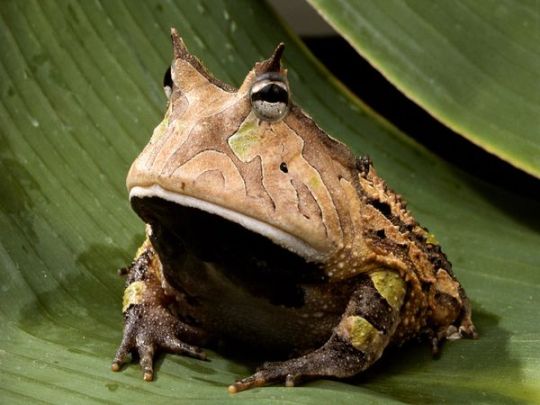

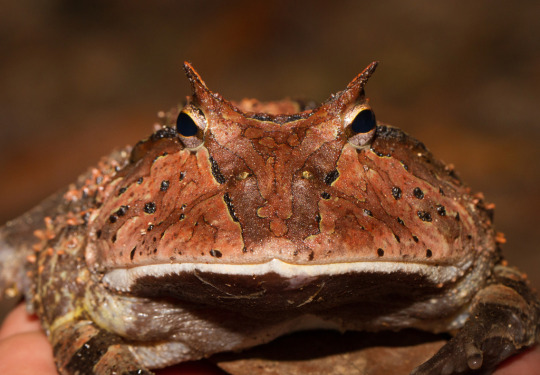
Honk for the Amazon Horned Frog
The Amazon horned frog, or the Surinam horned frog (Ceratophrys cornuta) is a medium-sized species of frog found in the tropical forests of South America. They tend to be wide and bulky, but only grow to be about 20cm in length and weigh 0.5kg. Color schemes can range from tan to green to brown, and this frog blends in very well with the leaf litter on the forest floor. The Amazon horned frog’s name comes from two horn-like protrusions over the eyes, although these are more likely meant to break up the frog’s silhouette than to be used for fighting. This species is also sometimes mistaken for a toad due to the bumps over its skin.
Like all frogs and toads, C. cornuta begins its life as an egg. After a male attracts a female by calling and the two mate, the male helps deposit the fertilized eggs onto the female’s back. The usual clutch size ranges from 300-600 eggs. The female then searches for an appropriate place-- usually an ephemeral pool-- for the eggs to develop into tadpoles, a process that takes anywhere from 3 to 25 days after being fertilized. Tadpoles are highly aggressive and will fight each other as they develop. It takes three months for tadpoles to grow into fully-formed frogs, although they do not become sexually mature for another 3 or 4 years.
In their day-to-day life, Surinam horned frog spends its time hiding in leaf litter or under fallen logs. It is an ambush predator, to which its appearance lends itself well. It’s predation actually makes it one of the most distinguished frogs, as they have one of the largest mouth-width to body length ratios. This exceptionally large mouth enables them to consume a wide variety of prey, including mice, fish, frogs, lizards, and tadpoles of their own species. Common predators consist of birds and snakes. Against each other, Amazon horned frogs are incredibly violent and will attack each other with their sharp teeth. They will also use those sharp teeth against predators or perceived threats.
Conservation status: Listed as Least Concern by the IUCN; however, they are currently threatened by heavy habitat loss and capture for the pet trade.
Photos
George Grall
Bernard Dupont (via Wikipedia)
Cullen Hanks (via iNaturalist)
#amazon horned frog#anura#Ceratophryidae#south american horned frogs#common horned frogs#frogs#amphibians#tropical forests#tropical forest amphibians#tropical rainforests#tropical rainforest amphibians#wetlands#wetland amphibians#south america#Amazon Rainforest#animal facts#biology#zoology
171 notes
·
View notes
Text
Y'know how some real frog species' can look really weird? I'm a little upset that more Amphibia characters aren't based on those. Don't get me wrong, the character designs in the show are SUPERB.
However, I'm a little upset that there's only been one non-canon Glass frog, and there's only a throwaway frobot based on the Suriname toad.
Where are the Shovel Headed frogs? Where are the Amazon Horned frogs? Where are the Hairy frogs? Where are the Poison Dart frogs? All I'm seeing are a lot of missed opportunities.
30 notes
·
View notes
Text
Table of Were-Creatures
“Even one who is pure in heart / and says their prayers by night / may become a ___ when the night-flower blooms
and the silver moon is bright.”
I’m not sure if I recommend using this with the Table of Races from a previous post (https://randomencounters.tumblr.com/post/631073167702687744/okay-fine-a-d100-table-of-races). I was trying this table out and, sure, a Drow Were-Styracosaur, a Succubus that turns into a Hyena when the moon is full, sure, but I’m not sure even I could handle a Mi-Go Were-Baleen-Whale.
Wolf
Bear (type appropriate to character’s native land)
Boar
Jackal
Hyena
Bat
Wild dudes with horns and hooves (d8: Deer, Moose, Ibex, Antelope, Gazelle, Fanged Muntjac, Saiga Antelope, Mountain Goat)
Big Cat (d4: Lion, Tiger, Panther, Jaguar)
Housecat
Domesticated Dog (d20: Chihuahua, Tibetan Mastiff, Great Dane, French Bulldog, Pug, Italian Greyhound, Golden Retriever, Black Lab, Basset Hound, Shih Tzu, Pit Bull, Husky, Beagle, Bichon Frise, Yorkshire Terrier, Corgi, Pomeranian, Boston Terrier, Cavalier King Charles Spaniel, Schnauzer)
Rodent (d10: Field Mouse, Rat, Naked Mole Rat, Guinea Pig, Jerboa, Squirrel, Sugar-Glider, Chipmunk, Capybara, Anti-Magic Field Mouse)
Beaver
Skunk
Possum
Fox
Hedgehog
Star-Nosed Mole
Ferret
Otter
Snake (d6: Cobra, Rattle, Ball Python, Puff Adder, Gliding, Winged, Hoop)
Frilled Lizard
Snapping Turtle
Horned Lizard
Suchian (d4: Alligator, Crocodile, Gharial, Caiman)
Plesiosaur
Deinonychus
Herbivorous Dinosaur (d4: Stegosaur, Styracosaur, Brachiosaur, Ankylosaur)
Pterodactyl
Amphibian (d8: Bullfrog, Tropical Poison Frog, Spring Peeper, Surinam Toad, Chinese Mustache Toad, Axolotl, Salamander, one of those weird extinct hammerhead dudes)
Cow
Giraffe
Goat
Sheep
Horse
Llama or Alpaca
Armadillo
Sloth
Kangaroo
Platypus
Koala
Panda
Anteater
Aye-Aye
Ape (d4: Gorilla, Chimpanzee, Orangutan, Proboscis)
Elephant
Rhinoceros
Hippo
Tapir
Fowl (d4: Chicken, Duck, Goose, Peacock)
Wild bird (d10: Crow, Woodpecker, Hummingbird, Eagle, Hawk, Pelican, Vulture, Owl, Penguin, Dodo)
Freshwater Fish (d6 Catfish, Salmon, Sturgeon, Gar, Fancy Koi, Fur-Bearing Trout)
Saltwater Fish (d20: Lionfish, Puffer, Stingray, Remora, Swordfish, Coelacanth, Anglerfish, Stoplight Loosejaw, Gulper Eel, Blobfish, Hagfish, Mola-Mola, Electric Eel, Sarcastic Fringehead, Hammerhead Shark, Sawfish, Megamouth Shark, Goblin Shark, Wobbegong, Great White Shark)
Cetacean (d6: Orca, Walrus, Baleen Whale, Dolphin, Barking Seal, Narwhal)
Marine Mollusk (d10: Dumbo Octopus, Blue Ring Octopus, Mimic Octopus, Humboldt Squid, Vampire Squid, Magnapinna Squid, Colossal Squid, Cuttlefish, Clam/Oyster/Mussel, Spiny Conch)
Crustacean (d6: Blue Crab, Snow Crab, Hermit Crab, Lobster, Mantis Shrimp, Pillbug)
Other marine invertebrate (d10: Starfish, Jellyfish, Sea Urchin, Sea Cucumber, Bobbit Worm, Anemone, Anomalocaris, Opabinia, Barnacle, Glaucus)
Arachnid (d8: Tarantula, Spiny Orb Weaver, Cartwheel, Black Widow, Regular Scorpion, Vinegaroon, Tick, Horseshoe Crabs which are apparently Arachnids)
Centipede
Insect (d10: Stag Beetle, Mayfly, Stick Bug, Wasp, Moth, Camel Cricket, Junebug, Earwig, Bullet Ant, Orchid Mantis)
Snail (d10: 1-6 garden, 7-9 venomous, 10 Flail)
Ooze (d4: Banana Slug, Gelatinous Cube, Green Slime, Black Pudding)
Lurker or Trapper
Roper or Darkmantle
Bag of Devouring
Rust Monster
Owlbear
Dragonet (roll d10: Red, Green, White, Black, Blue, Gold, Silver, Brass, Bronze, Copper)
Duckbunny
Bullette
Flumph
Mimic
Displacer-Beast
Blink Dog
Elemental/Paraelemental (d8: Fire, Water, Air, Earth, Lava, Ice, Lightning, Void)
Wyvern
Bonnacon
Basilisk/Cockatrice
Pegasus
Unicorn
Phoenix
Mongolian Death Worm
Fresno Nightcrawler
Cryptoleporidae (d4: Jackalope, Skvader, Rasselbock, Wolpertinger)
Elwetrisch
Dungavenhooter
Squonk
Sidehill Gouger (aka Prock, Hunkus, Gyascutus)
Avalerion
Rhinogradentia
Fiji Mermaid
Pokemon of choice
Pixie
Giant
Worm-on-a-string
Venus Fly Trap
Car
Chimaera (traditional Lion-Goat-Snake)
Chimaera (reroll this table three times for the three animals to combine)
Randomitemdrop.tumblr.com/random
Randomencounters.tumblr.com/random
271 notes
·
View notes
Text
Who is the bigger fool – the fool or the fool that falls for it?
by Stevie Kennedy-Gold
The start of April only means one thing – pranks galore thanks to April Fools Day! Ok, ok, I realize that’s not necessarily true as April also marks that spring has sprung, many small critters are emerging from their hibernations, and we celebrate, among other things, Earth Day and Arbor Day. But we can all agree that April usually starts with a load of laughs, some fibs, and some fools. In the animal kingdom, however, fooling isn’t regulated to one day. In fact, many amphibians and reptiles rely on their ability to fool both predators and prey to survive.
Masters of Disguise
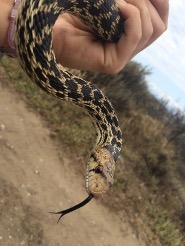
Fig. 1: Because of the large blotches on their backs, people often confuse the nonvenomous gopher snakes with venomous rattlesnakes. Gopher snakes play into this confusion, however, by imitating rattlesnake behaviors.
One of the oldest tricks in the book when it comes to fooling another is to transform to look like someone, or something, else. Although herpetofauna lack access to theatrical wardrobes teeming with makeup and outfits, they evolved behaviors and physical attributes that allow them to imitate other things. The gopher snake (Pituophis catenifer, Fig. 1), for instance, is a totally harmless colubrid species found across the western and middle United States and into Canada. They are beautiful animals, having splotches of gold, reddish-brown, and black along their bodies, and, due to these colorations, are often mistaken for rattlesnakes. What’s more, when spooked, gopher snakes tend to flatten their heads, coil into a strike position, and quickly sway their tails to and fro, a rattlesnake imitation that includes a realistic sound component when it occurs in dry grass. Most snakes are solitary animals and prefer to avoid conflict and avoid expending energy in get-away attempts, so scaring away potential predators through imitation is preferred over fighting and biting. Often times, this imitation works, and potential predators leave the gopher snake alone.


Fig. 2: Smooth horned frog (Proceratophrys boiei) specimens in the collection. Although the points above their eyes have been distorted due to preservation, it is clear to see how these frogs used their coloration, patterning, and morphological features to blend into leaf litter on the forest floor.
Predictably, snakes are not the only masters of disguise. Many frog species have unique morphological features that allow them to resemble other items in nature. The dark brown coloration and the points above the eyes of the smooth horned frog (Proceratophrys boiei) give it the appearance of a leaf (Fig. 2), allowing it to blend seamlessly into the forest floor and enabling it to both evade predators and ambush prey. Similarly, the entirely aquatic Suriname toad (Pipa pipa) looks like a dead leaf in the water due to its brown coloration and flattened body. Unless you’re an omnivore that prefers dead, low-nutrition leaves, the imitation tactics of these frogs improves their chances of survival and fools any prey items not clever enough to see past their disguises.
Deceptive Practices
Not all imitations are meant to help an animal blend in. Sometimes, imitations serve “nefarious” intents. Although not apparent to an outside observer, alligator snapping turtles (Macrochelys temminckii) have a sneaky tactic to lure prey directly into their mouth. The tongues of these turtles evolved a vestigial piece of flesh, called a lingual lure, to protrude from the tip. Alligator snapping turtles will sit on the bottom of lakes and rivers and open their powerful jaws to reveal this pink bit of flesh. They then move the lingual lure around to make it look like a tasty worm, fooling unsuspecting fish right into their giant maws. Spider-tailed horned vipers (Pseudocerastes urarachnoides), a species endemic to Iran, employ a similar tactic, albeit far more noticeably to the casual observer. Admittedly, the common name of this animal gives away the punch line, but, nonetheless, this species of viper evolved to have a unique tail. Much like how a rattlesnakes’ rattle is made of modified scales, the spider-tailed horned viper’s tail scales evolved so that the last few scales bulge out into a small bubble and the scales leading up to that bulge are heavily keeled, or ridged. While keeled scales are common in most species in the Viperidae family, the keeling on these tail scales is extremely exaggerated, making the scales look like long spikes, or even legs. When you combine the long, keeled scales with the large, posterior bulge, the tail of a spider-tailed horned viper actually looks like a spider! With the snakes speckled coloration allowing it to blend into surrounding rocks and a solid tail wiggle performance, the snake’s tail looks like a tasty spider lunch to unsuspecting birds… which then become lunch for the snake. Imitation is the best form of flattery… or maybe a reliable way to fill your belly!
Now You See Me, Now You Don’t
Whereas some reptiles and amphibians are the masters of disguise, allowing them to hide from predators or to lure unsuspecting prey, other herps use subtler bodily alterations to fool potential prey, predators, and even conspecifics (animals of the same species). Take, for example, color changes. Chameleons often come to mind at any mention of lizard color changes, but it is actually a misconception that chameleons perfectly blend into their surroundings, mimicking every leaf and twig in the background. In truth, chameleons and many other lizard species change colors to improve thermoregulation and to communicate with conspecifics – males signaling to females that they’re ready to mate, or relying on darker colors to demonstrate aggression. There are, however, some species of frogs that do lighten or darken their hue to blend into their surroundings. The gray treefrog (Hyla versicolor) is present across most of the eastern and middle United States and, as its name implies, is an arboreal species. Because it spends its time among green leaves and gray-brown tree trunks and branches, the gray treefrog has evolved the ability to change its body coloration so it can blend in perfectly with the substrate upon which it perches. If it is on a bright green leaf, the frog will shift to a green hue. Upon landing on a mossy rock or a lichen-crusted tree trunk, the frog will change to a more gray, blotched hue instead. One second, you can see the animal perfectly and, in the next, it has completely melted away into its surroundings.
Leaving Something Behind
Other herpetofauna use more exuberant tactics to evade capture. Unlike the camouflage-wielding gray treefrog, many lizard and salamander species will self-autotomize their tails to avoid being eaten. In these instances, the herp has already been seen (or, worse, caught by a herpetologist!) and needs a quick getaway. Running away without a distraction means that the predator will likely give chase and possibly capture the lizard or salamander. However, by self-autotomizing – or breaking off – their tails, these animals increase their chances of escaping. This drastic tactic is effective because the tail continues to wriggle around and move once detached from the animals’ body, making it a tasty and easy to grab meal! Many predators become distracted by the tail, leaving the lizard or salamander free to make its escape. Interestingly, this behavior is not strictly regulated to predator attacks. I witnessed a prolonged aggressive battle between two male western fence lizards (Sceloporus occidentalis), where one male lost his tail and, instead of leaving it to writhe on the ground and eventually decompose, the lizard (attempted) to make a hasty, grapple-filled retreat from the other male, all while holding his detached tail in his mouth! Although this seems morbid, it’s actually quite clever – tails require a lot of energy and resources to make, but then the appendage stores energy in the form of meat and fat. This male fence lizard was likely keeping hold of his old tail so that he could later consume it and regain those resources. And, don’t worry, most salamander and lizard species can regrow their autotomized tails (Fig. 3), an ability that many herpetologists take advantage of when we need tissue for genetic studies.

Fig. 3: Example of tail loss and regrowth in a female Anolis carolinensis (green anole). The red arrows points at the old break point, and you can see how the tail color differs in the new growth.
The list of herpetofaunal imitators and imposters, pranksters and fibbers goes on and on. Although these disguises and imitations aren’t meant to make other animals giggle and laugh as our April Fool’s Day pranks often do, these tactics allow these reptiles and animals to live another day, evade unwanted attention, or snag a tasty meal. But, at the end of the day, it really does beg the question… who is the bigger fool – the fool or the fool that falls for it?
Stevie Kennedy-Gold is the collection manager for the Section of Amphibians and Reptiles at Carnegie Museum of Natural History. Museum employees are encouraged to blog about their unique experiences and knowledge gained from working at the museum.
#Carnegie Museum of Natural History#April Fools#Amphibians#Reptiles#Green anole#Salamander#Lizard#Frog#Snake
31 notes
·
View notes
Text
The LITG S2 Cast as Frogs Pt 2
Pt 1 for the uninitiated
Bobby - White’s Tree Frog

Easygoing, popular, friendly
Shannon - Wood Frog

Resourceful, tough, won’t take your shit
Rocco - Surinam Toad
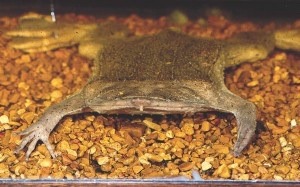
Abomination, weird way of communicating, bad habits
Carl - Wallace’s Flying Frog

Cute, bad at leaving comfort zone, awful at confrontation
rHannah - Indian Bullfrog
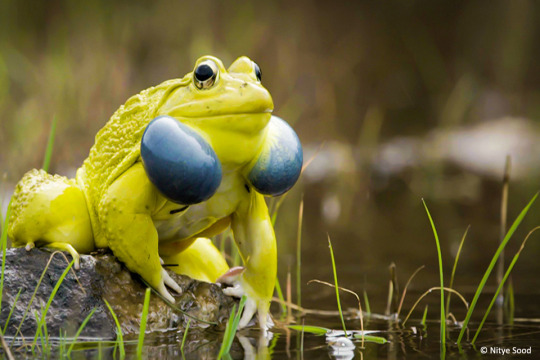
Tries too hard to find a partner, entertaining in a weird way, invasive species
Lucas - Oriental Fire-Bellied Toad
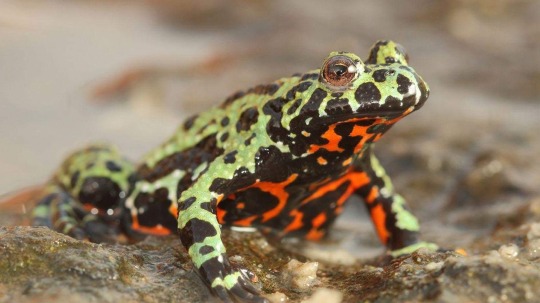
Bark with an even worse bite, popular, strange markings
Blake - Poison Dart Frog
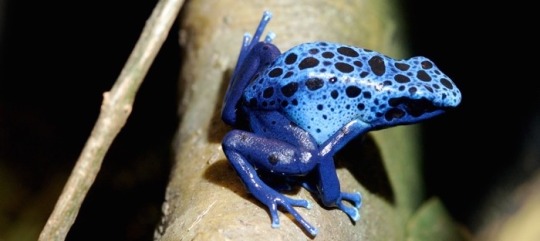
Attractive, eye-grabbing, toxic as hell
Kassam - Amazon Milk Frog
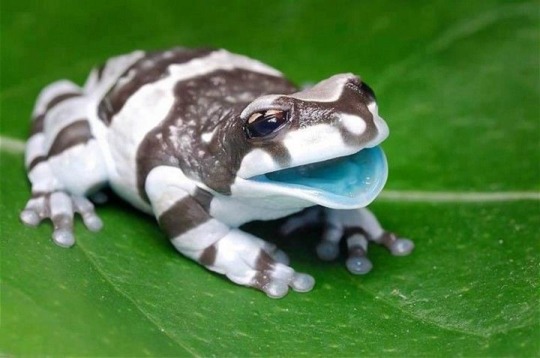
Unique, interesting, bad under pressure
Jo - Desert Rain Frog
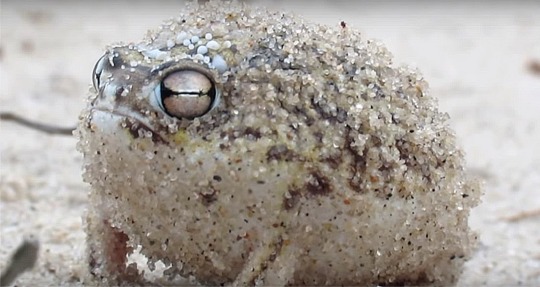
Known for strange communication, not as intimidating as it thinks, ugly but in different ways
Jakub - Brazilian Horned Frog
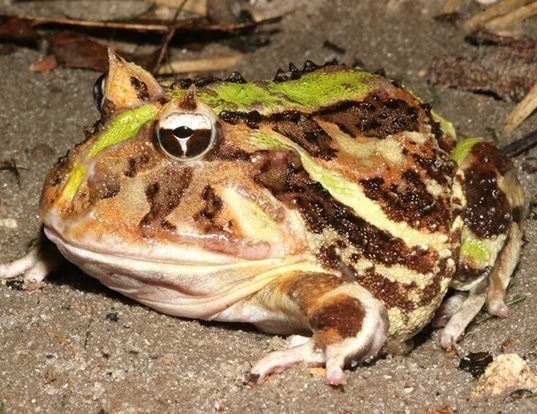
Arrogant, predatory, should not exist
#again please imagine this as the awkward power point presentation it was intended to be#litg#litg bobby#litg shannon#litg rocco#litg hannah#litg carl#litg blake#litg kassam#litg lucas#litg jakub#litg jo#this series is my crowning achievement
53 notes
·
View notes
Note
What kinds of frogs do you think the guilty gear fighters could be?
Zato is a Surinam toad because they’re both crimes against god.
Genuinely, though considering frogs are my thing one would think I’d already have thought this all out.
For some reason the only ones I can think of would be the stupid goofy ones. Ky is an edible frog because irony. Raven is a hairy frog because they break their own limbs as a form of self defense. Sol is a horned frog because it has funny horns and a big grumpy mouth. Potemkin is a goliath frog because larj
14 notes
·
View notes
Text
Anuran (Frog and Toad) Class List
Sincere apologies to @froggiestfacts for doing a similar list, but I wanted to put my own take on it
Fighter: South American Horned Frog

Barbarian: African Clawed Frog
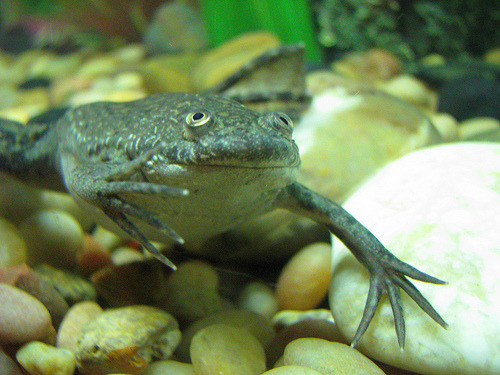
Paladin: Australian Green Tree Frog

Thief: Grainy Cochran Frog
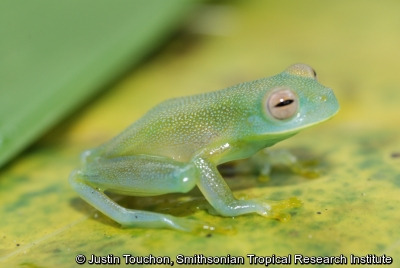
Ranger: Dotted Humming Frog (w/ tarantula partner)
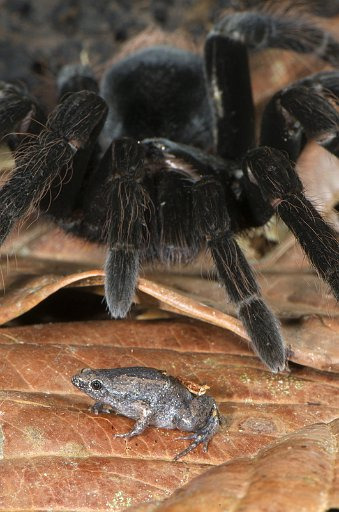
Bard: Spring Peeper
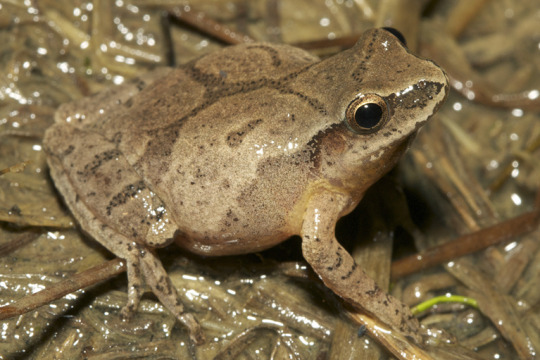
Wizard: Red Eyed Tree Frog
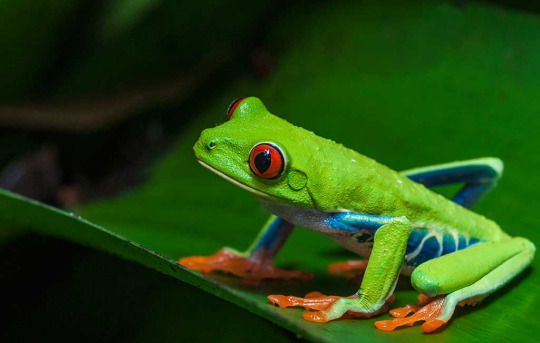
Sorcerer: Fire Belly Toad

Warlock: Common Suriname Toad
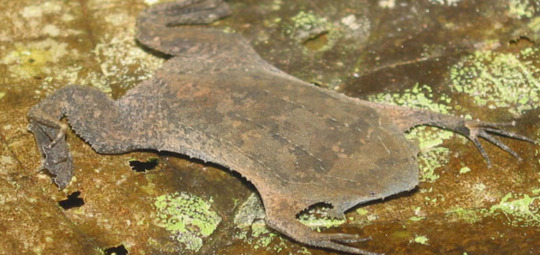
Cleric: Golden Toad (extinct)
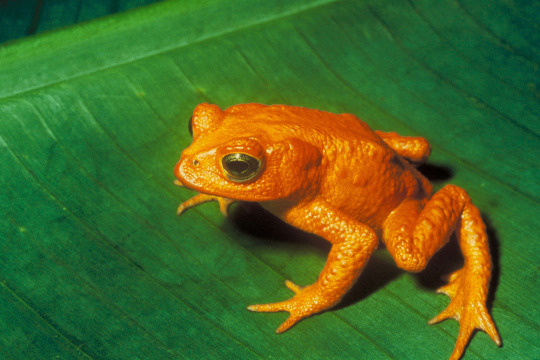
Monk: Malabar Gliding Frog
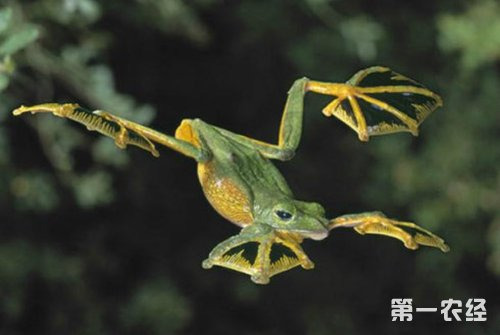
Druid: American Toad

#animal class lists#tw: arachnophobia#I know people get squicked out by how suriname toads carry their eggs so I found one without#frog#toad
123 notes
·
View notes
Note
top 5 frog/toad species
- DESERT RAIN FROG!!!- amazon milk frog!! - black webbed free frog - vietnamese moss frog- surinam horned frogim surprised i know enough frogs to be able to answer this ahah
4 notes
·
View notes
Text
اغرب الضفادع صور حيوانات
اغرب الضفادع
أغرب الضفادع
لربما أول ما تُفّكر به عندما تسمع كلمة ضفدع هو البرمائي ذو اللون الأخضر أو الرمادي والذي يعيش في المستنقعات أو على الأخشاب، ولكن وبشكل لا يصدق فالضفادع من بين الفقاريات الخمس الأكثر تنوعاً، حيث هناك ما يقرب الـ 4,800 نوع من الضفادع، وهو ما يشكّل نسبة 85 % من البرمائيات الموجودة تقريباً. من بين كل هذه الأنواع هناك بعض الأنواع التي تبدو غريبة مظهراً أو سلوكاً، سأقوم بإختيار أغرب الضفادع بالنسبة لي وسأعرضها مع القليل من المعلومات عن كل واحد منها :
الضفدع البرازيلي المُقّرن | Brazilian horned frog :
وهو نوع من الضفادع ينتمي لفصيلة [ ليبتوداكتيليداي | Leptodactylidae ]، ويستوطن الأماكن شبه الإستوائية والإستوائية من البرازيل، ويعيش في الغابات الرطبة المنخفضة، والسبخات ذات المياه العذبة، والبرك. وهذا النوع مُعرّض لخطر الإنقراض نتيجةً لتدمير بيئته، بالإضافة إلى تربيته في الأسر كحيوان أليف.
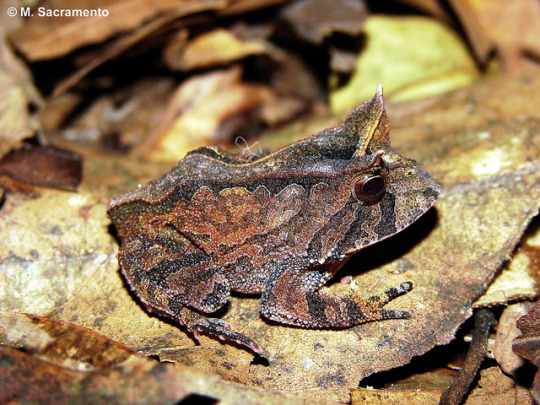
الضفدع البرازيلي المُقّرن | مصدر الصورة بواسطة M. Sacrameto.
ضفدع جالوت | Goliath frog :
ما يجعل هذا النوع مميزاً هو حجمه الضخم، حيث يعد أضخم أنواع الضفادع على قيد الحياة، بطول يصل لـ 33 سم من الخطم وحتى نهاية الجسد، ووزن يصل لـ 3 كجم. ويقتصر وجود هذا الضفدع على مساحات صغيرة من الكاميرون وغينيا الإستوائية، وهو نوع مهدد بالإنقراض نتيجة تدمير بيئته، وصيده لأكله وللإتجار به حيث يُربّى كحيوان أليف.

ضفدع جالوت | مصدر الصورة بواسطة Ryan Somma.
الضفدع السلحفاة | Turtle frog :
وهو ضفدع غرب إسترالي، الوحيد في جنس [ مايوباتراتشس | Myobatrachus ]. ولهذا الضفدع رأس صغير، وأطراف قصيرة، وجسم مستدير، يصل في طوله إلى 4.5 سنتمتر. سُمّي الضفدع السلحفاة بهذا الاسم لأنه يحفر في الرمل نحو الأمام كالسلحفاة على عكس بقية الضفادع والتي تحفر نحو الخلف. يتغذى الضفدع السلحفاة على النمل، ولذا فتكيّف الأطراف العضلية القصيرة مفيد خصوصاً عند محاولة إختراق تلال النمل.
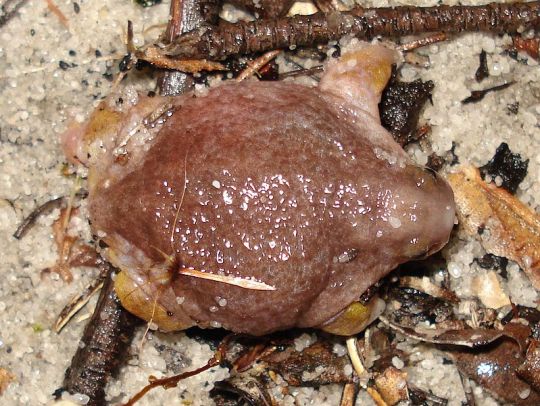
الضفدع السلحفاة | مصدر الصورة بواسطة Paul J. Morris.
علجوم سورينام | Surinam toad :
وهو نوع من الضفادع في فصيلة [ بيبداي | Pipidae ]، يعيش شمال قارة أمريكا الجنوبية، ويستوطن الغابات الرطبة المنخفضة الإستوائية أو شبه الإستوائية، والمستنقعات الإستوائية وشبه الإستوائية، والمستنقعات، والسبخات ذات المياه العذبة. يشبه في شكله ورقة الشجرة، فهو مسطّح بشكل كبير وأطرافه قصيرة ومسطحّة كذلك، ولونه بُنّي غامق. بطول يصل تقريباً لـ 20 سم. وله عينان دقيقتان، ولا يملك لا لسان ولا أسنان.

علجوم سورينام | مصدر الصورة بواسطة Arthur Champan.
ويُعرف هذه العلجوم بسلوكه وعاداته الإنجابيّة الغريبة، حيث يُصِدر الذكور أصوات نقر حادة على عكس بقية العلاجم التي تجتذب شركائها عن طريق النقيق. وبعدها يعتلي الذكر الانثى ويتشبث بها ليشكّلا ما يُعرف بالزوج التراكبي، وبعدها تسبح الانثى باتجاه سطح الماء لتخرج جزء من جسدها ومن ثم تغطس مرة اخرى، تُكَرر هذه العملية وفي خلال كل مرة تبيض الانثى عدة بيضات تعود إلى ظهرها بفعل حركة الذكر، لتُغرس هذه البيضات في الجلد. وبعد ان تنتهي عملية التزاوج وتلقيح البيض، يتعمق البيض اكثر في الجلد لتصنع كل بيضة تجويف خاص بها، ومن ثم يفقس البيض داخل هذه التجاويف، ولا تخرج العلاجيم إلاّ عندما تُصبح مكتملة النمو.
الضفدع الفيتنامي المُطحلب | Vietnamese mossy frog :
وهو أحد أنواع الضفادع من فصيلة [ Rhacophoridae ]، يعيش في الفيتنام الشمالية ولربما في الصين أيضاً، ويستوطن الغابات الرطبة المنخفضة الإستوائية وشبه الإستوائية، والغابات الجبلية الرطبة الإستوائية وشبه الإستوائية، والسبخات ذات المياه العذبة، والمناطق الصخرية. وهو ضفدع شبه مائي شبه شجري.
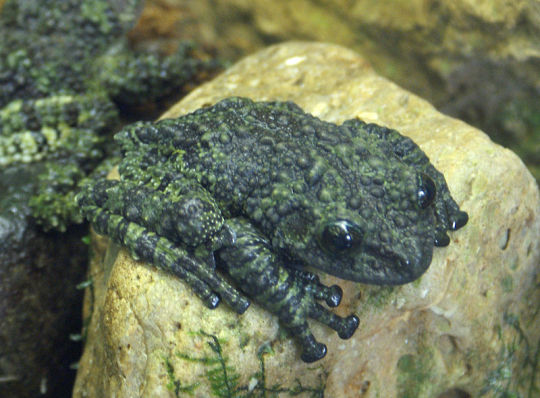
الضفدع المُطحلب | ملكيّة عامّة.
أخذ هذا النوع اسمه من جلده المزركش بالأخضر والبني والذي يشبه الطحالب التي تنمو على الصخور بشكل كبير، ويشكّل جلده هذا شكلاً فعالاً من أشكال التمويه. لهذا الضفدع منصات لزجة تفيد في الإلتصاق بالأسطح وبطن أملس كما في معظم الضفادع الشجرية، وتكون الإناث عادةً أكبر حجماً من الذكور بطول يتراوح بين 7-8 سم.
الضفدع البنفسجي | Purple frog :
وهو ضفدع يوجد في جبال جنوب الهند، وهو الوحيد في فصيلة [ Nasikabatrachidae ]، له جلد أملس بنفسجي اللون، وجسد مستدير وأطراف قصيرة ورأس صغير بأنف يشبه أنف الخنزير. ويعيش هذا الضفدع تحت الأرض طوال الوقت، حيث يعيش في جحر لا يخرج منه سوى أسبوعين في السنة.
الضفدع البنفسجي | مصدر الصورة بواسطة Karthickbala.
تم دراسة ووصف هذا الضفدع في عام 2003، بعد الحصول على عينة من ادوكي التابعة لولاية خير الله في الهند. وهذا النوع كان معروف قبل ذلك بالنسبة للسكاّن المحليين وبعض الباحثين، ولكن في 2003 تم وصفه وتصنيفه.
ضفدع الطماطم | Tomato frog :
وهو جنس من أربعة أنواع، ثلاثة منها تنتمي إلى مدغشقر، وهي ضفادع ذات لون أحمر مُشِرق، عندما تشعر بالتهديد تقوم بنفخ جسدها، وإذا ما التقطها المُفترس بفمه، تفرز سائل أبيض ثقيل القوام يصل إلى أعين المفترس ويجبره على تركها، هذا السائل يحوي سُم يسبب الحساسية بالنسبة للبشر، هذه الحساسية غير قاتلة والضفدع لن يفرز السائل سوى في حالة الخوف لذا يُربّى هذا الضفدع كحيوان أليف.

ضفدع الطماطم | مصدر الصورة .
يتراوح عمر ضفدع الطماطم بين 6-8 سنوات، ويكون لونه عند البلوغ برتقالي مُصفر إلى أحمر قاتم، وتكون الإناث أكبر من الذكور حجماً حيث تصل لطول 10 سم. وتميل هذه الضفادع الجميلة للتغذي على الحشرات واللافقاريات الصغيرة.
الضفدع الزجاجي | Glass frog :
وهو ضفدع ليمي اللون ينتمي لفصيلة [ Centrolenidae ]، يتميّز ببطن شفّاف يمكن رؤية الكبد والقلب والجهاز الهمضي وبقية الأعضاء الداخليّة من خلاله، ومن هنا أخذ اسمه. وهو ضفدع صغير الحجم عموماً، حيث لا يمكن أن يتعدى 7.5 سم في الطول.

الضفدع الزجاجي | مصدر الصورة.
الضفدع الأرجنتيني المُقّرن | Argentine horned frog :
والذي يُعرف أيضاً بـ [ ضفدع باك مان ] نسبةً لفمه الواسع. وهو أكثر الأنواع شهرةً في جنس [ الضفدع المُقّرن | Horned frog ]، يعيش في الأرجنتين والأرغواي والبرازيل، ويستوطن الغابات المطيرة. وهو ضفدع نَهِم، يحاول إبتلاع أي شيء يتحرّك بالقرب من فمه العريض، وهذا يشمل الحشرات والقوارض والسحالي وحتى الضفادع الأخرى.

الضفدع الأرجنتيني المُقّرن | مصدر الصورة بواسطة Max Gross.
تصل الإناث بطولها لـ 16.5 سم، من الفم إلى نهاية الجسد، والذكور لـ 11.5 سم. ويمكن أن يصل عمر هذا الضفدع في الأسر حتّى 10 سنوات، وهذا العمر ينقص في البرية. يعد الفم الواسع الذي يشكل نصف الجسد تقريباً الميزة الأكثر ملاحظةً. ويتلّون الضفدع الأرجنتيني باللون الأخضر وبعض الخطوط الحمراء.
ضفدع خُلد الماء | Gastric-brooding frog :
وهو جنس من الضفادع كان يعيش في شرق إستراليا، يتألّف من نوعين فقط، كلاهما انقرضا منتصف ثمانينات القرن العشرين، وقد كان جنساً فريداً من نوعه لأنه الوحيد الذي يحتضن صغاره في معدته. أسباب إنقراض هذا الجنس غير مفهومة، ولكن يُرجّح أن يكون التلوث وإنتشار بعض الأمراض وتدمير الموائل هي الأسباب التي أدّت إلى إنقراضه.
وبما أنه حيوان منقرض منذ زمَن فلم أجد صور مرخّص بإستخدامه ولكن يمكنني إرسالك إلى هنا لتجد بعض الصور عنه وكيف يحتضن صغيره في معدته بشكل مُذهل.
العلجوم المصلوب | Crucifix toad :
وهو ضفدع إسترالي، الأكثر تميزاً في جنس [ Notaden ]، في حين أنّ الأنواع الباقية داكنة اللون، فهذا النوع أصفر مُشِرق اللون وعلى ظهره صليب بعدة ألوان مختلفة. هذا الصليب مُحدّد بنقاط سوداء كبيرة وفي داخله نقاط بيضاء وسوداء وحمراء.

العلجوم المصلوب | الصورة تعود لويكيبيديا الإنجليزيّة بواسطة Tnarg 12345.
الضفدع المُقّرن طويل الأنف | Long-nosed horned frog :
ويُعرف أيضاً بـ [ ضفدع الملايو المُقّرن | Malayan horned frog ]، وهو ضفدع كبير الحجم يتراوح طوله بين 100-120 ملم، وله لون بني فاتح يساعده على التخفي في أرضيّة الغابة، ولهذا النوع من الضفادع ثلاث رؤوس مدببة على رأسه، اثنين منها فوق العينين والثالث في مقدمة الخطم. لتشكّل معاً ما يعُرف بالقرون، ومن هنا أخذ هذا الضفدع الرائع اسمه.
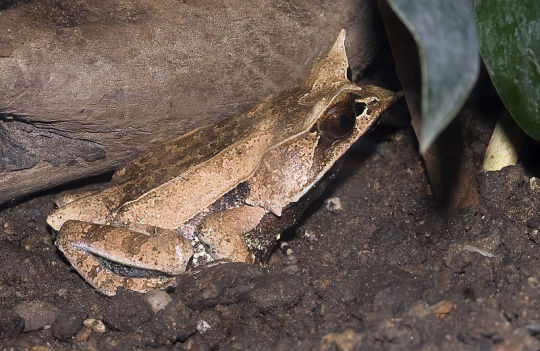
ضفدع الملايو المُقّرن | مصدر الصورة بواسطة Olei.
April 15, 2019 at 12:45AM صور حيوانات أكمل المقال على شموس نت http://bit.ly/2UVTq26
0 notes
Photo
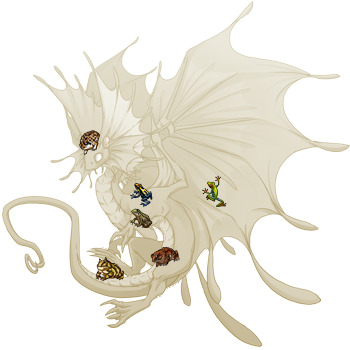
Flight Rising’s frog companions and toad companion, on a Fae for the example.
Toad Companion based on the Common Toad, Bufo bufo


Desert Rain Frog Companion based on the Desert Rain Frog, Breviceps macrops

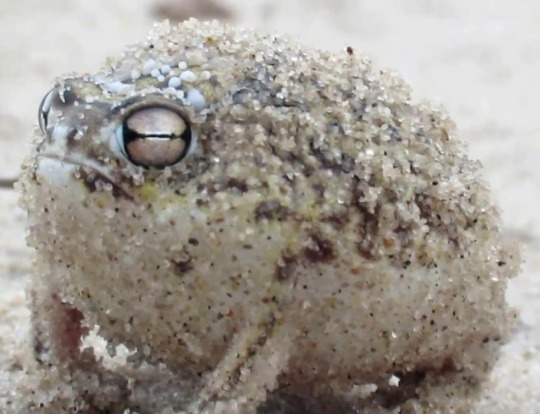
Horned Frog Companion based on the Surinam or Amazon horned frog, Ceratophrys cornuta

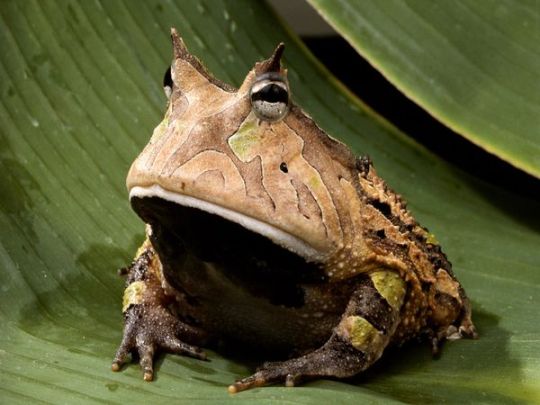
Poison Dart Frog Companion based on the Poison Dart Frog, Ranitomeya amazonica


Red-eyed Tree Frog Companion based on the Red Eyed Tree Frog, Agalychnis callidryas


The Marsh Frog Companion was a little tricky, it seems it may be based on two different species.

Marsh Frog, Pelophylax ridibundus

or Leopard Frog, one of 14 species within the true frog genus Lithobates

#FR#flight rising#real life#nature#amphibians#frogs#toad#toad companion#marsh frog companion#poison dart frog companion#red-eyed tree frog companion#desert rain frog companion#horned frog companion#apparel#attire#long post
178 notes
·
View notes
Text
Hyperallergic: The Biodiversity of the World Captured in Five Centuries of Animal Art
“Bengal tiger,” watercolor by a Calcutta artist (1820) (Hastings Albums, courtesy British Library)
A Bengal tiger does not travel well, and especially didn’t in the centuries before sedation and airplanes. But 19th-century scientists in England could study its stripes from afar thanks to the international trade of art, long a vital medium for scientific understanding. The Paper Zoo: 500 Years of Animals in Art by science historian Charlotte Sleigh, out March 8 from the University of Chicago Press, is a lushly illustrated publication with 250 images from the British Library chronicling how scientific art has expressed biodiversity over the centuries.
Cover of The Paper Zoo (courtesy University of Chicago Press)
It has not always been kind. Sleigh notes that the original text for an illustration of a horned frog in George Shaw’s The Naturalist’s Miscellany (1789–1813) read: “Should inquiry be made, which is the ugliest animal yet known to exist? The creature here represented might perhaps with justice be proposed as an answer: an animal of such prodigious deformity as even to exceed in this respect the Surinam toad, or Rana Pipa.”
Sleigh divides her book into four sections: exotic, native, domestic, and paradoxical. That last is particularly colorful, filled with anecdotes about completely imaginary creatures that were assembled due to mangled word-of-mouth descriptions, and sometimes supported by enterprising individuals. “Cashing in on the craze for natural-historical collections in the early modern period, canny sailors and inhabitants of far-flung lands stitched together body parts to make salable, ‘real’ monsters,” Sleigh writes. Along with unicorns and mermaids, there is the more fantastic and terrifying “manticore” in Edward Topsell’s 1658 The History of Four-footed Beasts and Serpents. The lion-like animal has the face of a man, with three rows of grinning teeth.
Sleigh explains that “animals began to appear in medieval works of art,” often as biblical Lambs of God or one of the symbols of the evangelists (an ox, lion, or eagle). As printing developed and became widespread, animals of varying accuracy flourished in books, whether in the form of early woodcuts or later engravings. A well-depicted exotic animal was the intellectual’s prize.
Pages from The Paper Zoo (photo by the author for Hyperallergic)
Pages from The Paper Zoo (photo by the author for Hyperallergic)
“Dürer mostly produced his animal images in watercolour, and such objects, like the pictures in the collection of the Lincei, were valuable items for exchange between wealthy savants around Europe,” Sleigh writes. “In Restoration London, a painting of a lizard on vellum could command higher prices than portraits in oil executed by even the most fashionable painters.”
Naturally, there were the overachievers, including John James Audubon, who put a vibrant, life-size aviary on paper with his 19th-century Birds of America. The Paper Zoo also has glimpses of incredible naturalist voyages like those of Maria Sibylla Merian, who in 1699 set out for South America to illustrate its insects, and Ernest Haeckel, who in the 19th century created detailed drawings of microscopic animals. They had a major influence on the fluid shapes of Art Nouveau.
High-speed and high-definition photography eventually took over as a way of visually capturing wildlife in the 21st century. Still, some extinct animals like the dodo or great auk mainly survive through old illustrations. Often, though, the creator’s name is lost. “Artists are not always acknowledged — and there is even more rarely a sound grasp of the different roles played by drawers, engraves, and colourists,” Sleigh states. Below are selections from The Paper Zoo, recalling the sometimes anonymous artist’s role in five centuries of shared scientific knowledge.
Johannes Jonstonus, Historiae naturalis de insectis (Frankfurt am Main, 1650–30), illustrations by Matthäus Merian. From The Paper Zoo: “The engraver and publisher Matthäus Merian the elder was the father of Maria Sybilla Merian, although he died when she was very young. He was apparently less committed to life-drawing than his daughter, producing visual descriptions of no fewer than eight separate species of unicorn.” (courtesy the British Library)
“Purple-bellied Lory (Lorius hypoinochrous),” original watercolor, later engraved as plate 170 in George Edwards, A Natural History of Uncommon Birds, and of Some Other Rare and Undescribed Animals (London, 1743–51) (courtesy the British Library)
“Horned frog,” from George Shaw, The Naturalist’s Miscellany (London, 1789–1813). The original text with the picture asked: “Should inquiry be made, which is the ugliest animal yet known to exist? The creature here represented might perhaps with justice be proposed as an answer: an animal of such prodigious deformity as even to exceed in this respect the Surinam toad, or Rana Pipa.” (courtesy British Library)
“King penguin,” from George Shaw, Musei Leveriani explicatio Anglica et Latina (containing select specimens from the museum of the late Sir Ashton Lever, Kt., with descriptions in Latin and English) (London, 1792) (courtesy British Library)
“1. The four horned Ram, 2. Horns of the Iceland Sheep, 3. Horns of the Cretan Sheep,” from Ebenezer Sibly, An Universal System of Natural History Including the Natural History of Man, etc. (London, 1794–1807) (courtesy British Library)
“Red-bellied snake,” from George Shaw, Zoology of New Holland, the first book of Australian animals (London, 1794) (courtesy British Library)
“Ring-tailed lemur,” from George Edwards, A Natural History of Uncommon Birds, and of Some Other Rare and Undescribed Animals (London, 1743–51). From The Paper Zoo: “This picture summons up the myth of the Fall: the contemplated fruit, the lurking partner, the curling, striped, snake-like tail. There is even a banished creature disappearing off stage-left. Edwards kept a ‘Maucauco’ (as the lemur was also known) alive for a while in his home, finding it a ‘very innocent, harmless Creature, having nothing of the Cunning or Malice of the Monkey-Kind.’” (courtesy the British Library)
“Octopus,” from George Shaw, The Naturalist’s Miscellany (London, 1789–1813). From The Paper Zoo: “The ocean is understandably a source of terror, and tales of giant squid or octopuses are one way of making such fears manifest. In 1802, the French naturalist Pierre Denys de Montfort posited the existence of two such species. This example from a British book of the same era is truly the stuff of nightmares, coyly curled onto the page, but threatening to escape.” (courtesy the British Library)
“Koalas,” watercolor by unknown artist, inscribed on the back, “Coola, an animal of the opossum tribe from New South Wales,” from the Marquess Wellesley Collection of Natural History Drawings. From The Paper Zoo: “A report in the Philosophical Transactions of 1808 announced a new creature, seen a few years previously and known locally as a koala wombat. ‘The ears are short, erect, and pointed; the eyes generally ruminating, sometimes fiery and menacing; it bears no small resemblance to the bear in the fore-part of its body.’” (courtesy the British Library)
“Young Sumatran tapir,” probably by J. Briois (March 1824), gouache on paper, from an album of 51 drawings of birds and animals made at Bencoolen, Sumatra, for Sir Stamford Raffles. Raffles helped establish the Zoological Society of London and its Zoological Gardens (now London Zoo). (courtesy the British Library)
“Crab (‘Cancer dentatus’),” published in “Observations on the Genus Cancer of Dr. Leach with Descriptions of three new species” by Thomas Bell, from Transactions of the Zoological Society (London, 1835). From The Paper Zoo: “Bell devoted his life to some of nature’s less glamorous creatures, amongst them the Crustacea. In his History of the British Stalk-Eyed Crustacea, he lamented that most works of natural history lacked all but the most superficial coverage of the class. This beautifully textured illustration of an exotic species helps to remedy that situation.” (courtesy the British Library)
“Red-pied cock,” from Robert Fulton, The Illustrated Book of Pigeons (London, 1874–76). Darwin once stated that the pouter “has a much elongated body, wings, and legs; and its enormously developed crop, which it glories in inflating, may well excite astonishment and even laughter.” (courtesy the British Library)
“Dodo (‘Didus’),” from Richard Owen, Memoir of the Dodo (London, 1866). From The Paper Zoo: “Founder of the Natural History Museum (as it is known today), Owen used underhand means to make sure that he acquired the first complete dodo remains to be recovered after the bird’s extinction at the end of the seventeenth century. His Memoir came out the following year, featuring this illustration of a squat, ridiculous bird – not unlike Tenniel’s illustration of 1865 for Alice in Wonderland.” (courtesy the British Library)
“The Wild Boar,” drawing by Friedrich Specht for No. 4 in Cassell’s Natural History Wall Sheets (late 19th century) (courtesy the British Library)
Charlotte Sleigh’s The Paper Zoo: 500 Years of Animals in Art is published by the University of Chicago Press and available from Amazon and other online booksellers.
The post The Biodiversity of the World Captured in Five Centuries of Animal Art appeared first on Hyperallergic.
from Hyperallergic http://ift.tt/2lASgnR
via IFTTT
1 note
·
View note